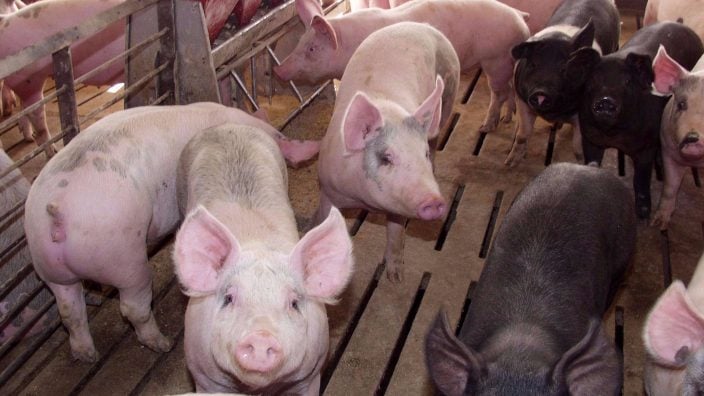Applications for Ohio Farm Bureau Health Plans now available
Members have three ways to apply: contacting a certified agent, calling 833-468-4280 or visiting ohiofarmbureauhealthplans.org.
Read MoreBeginning this year, there will be a different look to many pigs being shown at the Ohio State Fair and statewide county fairs due to a ban on the use of the feed additive ractopamine.
Ractopamine, simply put, converts fat to muscle and is a very popular product in the show pig industry. Although ractopamine is legal, licensed by the U.S. Food and Drug Administration and has been used safely in the pork industry for over 40 years, one of America’s largest trading partners will no longer accept pork that has been produced using the substance.
“China, because of a very serious outbreak of African Swine Fever in their hog herds, is now starting to buy more pork from the U.S. and has decided that they will not take any products from swine that have been fed ractopamine at any point in their lifetime,” said Dr. Tony Forshey, state veterinarian with the Ohio Department of Agriculture. “That creates a marketability issue for all swine and as a result, packers that ship internationally have stated that they will no longer slaughter pigs that have been fed the additive so they can maintain their market access to China.”
Many pigs that are shown during fair season are delivered to packers that ship pork products all over the globe. Because of that, fair boards across Ohio are protecting themselves from liability concerns by having exhibitors sign an affidavit at weigh-in to say that the exhibits have never been fed ractopamine.
“A half-life for ractopamine is only 24 hours so after 48 hours you are probably not going to find it in the urine, but it will remain in the organs for the lifetime of a fair pig,” Forshey said. “If exhibitors wanted to go a step further they may want to consider getting the same type of form signed when they buy a pig from a producer or at a jackpot or club show to ensure that ractopamine has never been a part of the pig’s diet.”
An affidavit has been created by the Ohio Department of Agriculture (ODA) and distributed by the Ohio Pork Council to assist county and independent fairs insure that pigs shown are ractopamine free.


Members have three ways to apply: contacting a certified agent, calling 833-468-4280 or visiting ohiofarmbureauhealthplans.org.
Read More

One of the best decisions Shannon and Heather Utter made a few years ago was looking into a Farm Bureau member benefit that has ended up saving them thousands of dollars on their energy bills.
Read More

Ryan Hiser has experienced first-hand the importance of having the opportunity to vote on issues that will affect his family operation and other farmers.
Read More

Bill Patterson, Cy Prettyman and Adele Flynn will continue to serve as officers for Ohio Farm Bureau Federation.
Read More

Delegates discussed many topics impacting agriculture including farmland preservation, local foods, and succession planning.
Read More

Twenty-six farmers govern the state’s largest farm and food organization.
Read More

The 2025 recipients are Fred Cooke (posthumous) of Richland County, Marvin Dietsch of Williams County, Steven Knollman of Hamilton County and Michele Miller (posthumous) of Ottawa County.
Read More

Nathan and Jill Parriman grow seasonal crops, including Christmas trees, pumpkins and cut flowers, providing U-cut experiences that invite customers to engage directly with agriculture.
Read More

The 2025 Distinguished Service Award recipients are Craig Adams, Mike Townsley, and Kellogg Farms, Kurt Farms and Stateler Family Farms.
Read More

Ohio Farm Bureau Treasurer Adele Flynn participated in the meeting, representing Ohio farmers.
Read More